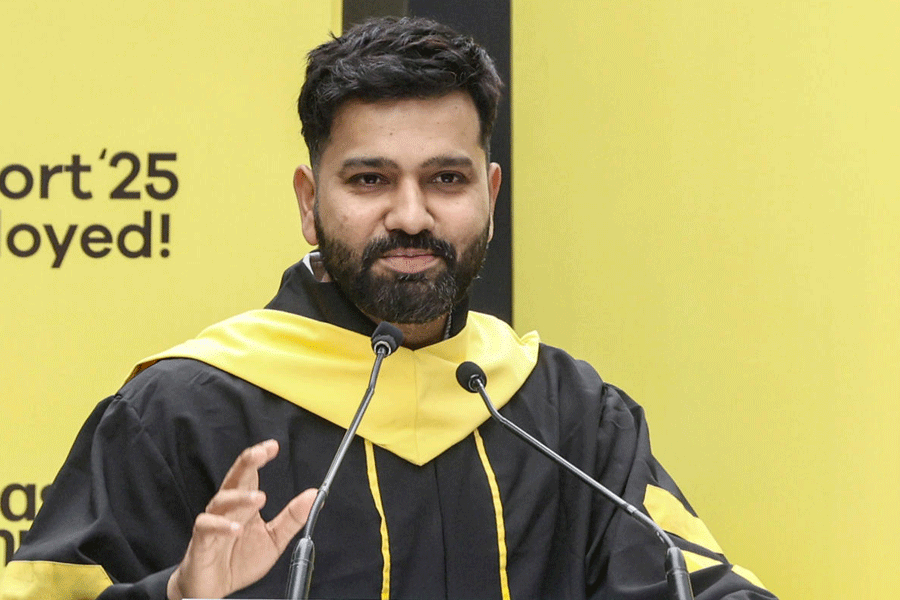 |
The world is Ruchir Sharma’s oyster. Or to be more precise, the world’s emerging markets are his stomping ground — and that can include anything from the freezing plains of Russia to sun-drenched, baking India or even tropically lush Indonesia.
But Sharma isn’t a mere tourist soaking in the sights. You might find him riding on Shanghai’s ultra-hi-tech Maglev trains that hit top speeds of 270kmph. Or you might spot him standing on the bustling main street of Nellore in coastal Andhra Pradesh checking out the ‘wild variety’ of vehicles rushing along the potholed road.
For Sharma, these journeys across the globe are all about money — the really big bucks. As the head of emerging marketing equity at the giant global bank Morgan Stanley he’s constantly on the move to see where the money’s going — and where it should be going. Now he has culled his globetrotting experiences into a book that weighs up the world’s emerging markets and attempts the tough task of picking the winners of the coming years. The idea, he says, is to, “Go to the country. Kick the tyres. Get a feel for ‘the story’.”
Over the last year he has been working feverishly and sieved his 15 years at Morgan Stanley into this 292-page guide to the world’s emerging markets. Is this an attempt to be a global economic guru? He categorically denies it. But the name says it all: Breakout Nations: In Pursuit of the Next Economic Miracles. Will it be India, China, Brazil and Russia that go blazing down the path to economic glory and riches? Or will it be surprise candidates like Turkey, Poland and even tiny Sri Lanka?
Certainly Sharma has clocked up a gigantic number of air miles in the last few years in his efforts to take the pulse of the world’s emerging markets. He used to be based in Mumbai but shifted to Morgan Stanley’s New York office about a decade ago. Since then he has lived a peripatetic existence staying on the road for almost six months a year. How does he keep up the pace? “I tend to do it in spurts,” he says. “So I travel for one month and then return to New York for another month.” It helps possibly, that he isn’t married.
 |
In recent months he has hopped from one continent to another, taking in some of his favourite countries like South Africa and Brazil. “As a tourist I really like going to Brazil and South Africa. But from an investing standpoint they are not that exciting currently,” he says. By contrast, there’s Turkey which is one of his hot favourites. He says: “Turkey is interesting both from the investing and visiting standpoints. It’s fascinating to see how the country is changing.”
As a top-level banker he frequently gets high-level access in many of the countries. On one occasion he made a highly critical presentation on Russia’s economy even though he realised at the last moment that Russian strongman Vladimir Putin was in the audience. In Egypt, when he visited then Prime Minister Ahmed Nazif, he says: “I was made to feel like an honoured state guest.”
One of the book’s crucial arguments is that key emerging nations like India, China, Russia, Brazil and South Africa — the so-called BRICS nations — are all looking like racehorses that are slowing as they approach the finishing line. The Chinese, he says, have been a fast-growth nation for almost 30 years but a combination of factors, he feels, will come together to slow the speeding Chinese locomotive. Says Sharma: “They’ve become a middle-income country and middle-aged. Your capacity to sprint goes down.”
Nevertheless, he’s more optimistic about India — partly because we’re still an extremely poor country even though incomes have risen in recent years. But he acknowledges that there’s a political problem that’s showing no signs of going away. “The problem in India is much to do with overconfidence. And I still don’t see that sense of urgency that something needs to be done to get us back on the high growth pattern,” he says.
Over the last one year Sharma has spent almost all his spare moments labouring over the book. He says: “Last year this was my obsession. I spent all my free time on it.”
But even when he was working overtime to get the book out, the one thing he didn’t give up on was staying fit. He works out for over an hour daily no matter where he is in the world. “I’m a bit of a fitness fanatic so I tell my guys that they have to leave me some time free for that,” he says.
Recently he took part in the World Masters, in Sacramento, California, a multi-event sporting meet for the over- 35s. Sharma participated in the 100m sprints and also in the 100m x 4 relay as part of an Indian team.
Sharma’s star country, which he believes is an economic sprinter, is South Korea. He points out that they have even developed strong brands like Hyundai, Samsung and LG, which sell all over the world. “South Korea’s rare ability to stay at the cutting edge of fast-changing industries has put it in a class by itself,” he says.
But Sharma insists that writing the book wasn’t an exercise in crystal ball gazing. He reckons it’s impossible to peer far into the future and divine what will take place in the decades ahead. He says: “I’m saying based on these matrix, this is what looks good today. I keep emphasising that nothing is permanent.”
Instead, he likes to think of himself as a sort of Paul Theroux or even a Bill Bryson. He says: “To me it is all about a journey rather than the end point. I’m taking the average reader on an economic travelogue. It is the journey that is important.”










